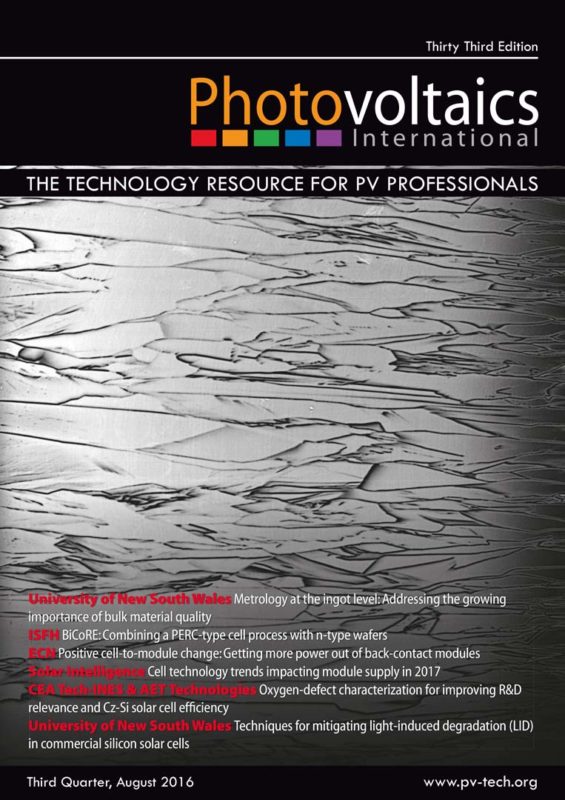By Jordi Veirman, Benoît Martel, Nicolas Enjalbert & Sébastien Dubois, CEA Tech-INES, Le Bourget du Lac, & Catherine Picoulet & Pierre Bonnard, AET Technologies, Meylan, France
Most high-efficiency solar cells are fabricated from monocrystalline Czochralski (Cz) silicon (Si) wafers because of the high quality of the material. Despite the considerable heritage from microelectronics, the Cz-Si substrate quality can still limit cell performance.


